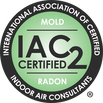Mike's Home Inspector BlogMichael Burfitt |
This picture shows a sample of the common types of wires seen in residential homes. Let’s summarize the data in an easier to understand format and take a look line by line looking at the wires pictured above from top to bottom: 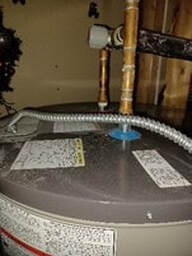 BX Wire on a Water Heater BX Wire on a Water Heater AWG This stands for American Wire Gauge and is a standard designation in North America. It is important to note that the smaller the number, the LARGER the wire and its carrying capacity. Type There are two types visible in the photo: NM and BX. NM stands for Non-Metallic and is frequently referred to by a brand name called Romex. BX (or B experimental. Long story…..) is otherwise known as Armour Coated wire and while more expensive is great at providing protection against mechanical damage. Conductors You might see wires referred to as “14/2” or “12/3”. This is a measure of the gauge and the total number of wires (ignoring the ground wire). At least one conductor is always a hot wire, but the second wire is not necessarily a neutral, even though a circuit needs a neutral to complete the circuit. Yes, on the surface that makes no sense, but we’ll get to that! Hey, That is Way Too Abstract! You are probably thinking that you are just an everyday homeowner and not looking to become a master electrician. Fair enough, so let’s spell out in plain English what these various wires are used for. 1)This is a low-capacity wire that is usually for electronics or extension cords. It can be used to power small loads, such as lighting. 2)This is a #14 (very common) wire that has 3 conductors. Two common uses are for 3-way lighting switches and split receptacles, where for example a light switch can turn off just one half of a wall outlet. 3)This is an armour coated BX wire that, in our home is used to power our electric water heater. Since it runs on 240V using both hot lines entering a home, it needs two hot wires (red and black) but since it does not need 120V power the two hots can alternate acting as a neutral. This is why I keep repeating to LEAVE ELECTRICAL WORK TO ELECTRICIANS! 4)Used for 20amp circuits, seen in modern kitchens, which thanks to changes in electrical codes are far more common than in the past. 5)Similar to #3 except it has a plastic rather than a metal cover. Our home uses this type of wire for baseboard heaters. 6)This 10/3 is usually used for dryers and air conditioners. Since a dryer has 120V components, it requires a separate neutral. My purpose was not to confuse or overwhelm but rather to show you why it is so important to always hire an electrician to modify an electrical system, no matter how minor. Too small a wire can easily lead to a fire (the circuit breaker or fuse provides no protection against this) and while too large is generally okay, it is a waste of money and can be difficult to connect. A Final Note I occasionally see extension cords being used as a substitute for permanent wiring in homes that do not have enough receptacles. I cannot emphasize enough that this is a dangerous practice that can lead to a fire, especially if it is buried under a carpet or rug. These type of cords are not designed for more than a month's use and the buildup of heat can easily start a fire. The same principle applies to Christmas lights and why I use them exclusively in the month of December. According to the InterNACHI Standards of Practice, we are required to check for and report as in need of correction “the presence of solid conductor aluminum branch-circuit wiring”. Does this mean aluminum wiring in a home is dangerous? Not necessarily.
Let’s first back up to the 60s. While that timeframe might bring images of Woodstock, counterculture or political change to a home inspector a different type of change comes to mind: that of a switch from copper (CU) to aluminum (AL) wiring due to the skyrocketing cost of CU wires in the mid-1960s. Until about 1973 this type of wiring was almost exclusively used in branch circuits, which are the wires that go to individual outlets and switches. Why is this type of AL wiring a concern? There are several reasons: AL Wiring is More Malleable Another way to say this is to say it is damaged easily. As it is a softer metal, it can be nicked or damaged far easier and a more amateur installation can greatly reduce the ability of the wire to safely carry electricity (and heat). AL Wiring Expands/Contracts Easily The #1 issue with AL wires is the significantly increased fire risk. The biggest danger comes from connections can come loose that can build up heat and eventually lead to an electrical fire. AL is an Inferior Conductor Compared to CU wiring, AL is not as good of a conductor of electricity. In most cases this is not a problem as an electrician knows to account for this but amateur DIYs might not realize the size difference between CU and AL. To give you an example of what I mean, below is a sample chart of the proper types of wire to use. Remember as the gauge gets smaller the wire gets bigger. As you can see AL is one size bigger in almost all conditions. AL wiring was never discontinued or banned and is still widely used to this day. Due to its low weight, it is the preferred material for outdoor transmission lines and is frequently seen inside homes as the material the main service conductors are made of. As well, post 1973 aluminum wiring is of a much higher quality and generally does not have the safety issues just mentioned to nearly the same degree. To summarize, while widely used, AL wiring can be considered dangerous in certain circumstances, especially if installed from 1965 to 1973. A home inspector can identify if you have this type of wiring and if so, will recommend an electrician evaluate the system to see if any corrective action needs to be taken to ensure the system is safe and functional for years to come. As both a professional home inspector and a father to a young child, my biggest concern is home safety: particularly of hidden dangers in a home that might not be immediately apparent. One such danger is Knob and Tube (K&T) wiring, which was commonly used from approximately 1880 up until the 1940s. Here is a picture of what K&T wiring commonly looks like: As you can see, once you know what to look for it becomes obvious, however it is often buried behind walls, in attics, in crawlspaces and other areas that are difficult to access. Contrary to popular belief, K&T is not inherently unsafe by itself, and it is not illegal to use in a residential property, although new installations of K&T in homes most certainly are! Furthermore, there are some advantages, such as better heat dissipation and a near guarantee it was installed by someone highly skilled as it was very difficult to install K&T properly.
With that said, I will always recommend an electrician evaluate a K&T system and if I were buying a home with K&T I would make immediate plans for its removal without exception. What is wrong with K&T and why do I personally consider it necessary to remove? Knob & Tube is Old and Outdated Given that K&T has not been widely installed in North America for almost 90 years, it is guaranteed that any K&T wiring installation is well past the expected lifespan of about 50-60 years due to deterioration of the cloth sheathing that was used. These systems are also underpowered for modern electrical needs and have almost certainly been modified with various degrees of skilled DIY’s, contractors, or electricians. There is also the concern of added insulation not allowing heat to escape from these wires, which can be a significant fire hazard. These Systems are Not Grounded All modern electrical systems are required to have a grounding wire (this is the bottom part of the plug), and this has been a requirement since about 1960. Therefore, since almost all K&T predates this timeframe, it can be safely assumed that a K&T system is not grounded. I plan on doing plenty of articles about residential electrical in the future but in the meantime just understand a ground is a safety feature designed to protect against electrical shock and all homes should be insured against ground faults. Speaking of insurance: Knob & Tube Has Potential Insurance Implications I would someday love to create a neat little table of all insurance providers in Nova Scotia and what their policy is on insuring houses with K&T. While I unfortunately do not have that information, I can safely assume that almost all insurers will either refuse to offer coverage to a home with K&T or require a significantly higher premium and/or deductible. It should also be mentioned that finding K&T in an attic or crawlspace is not by itself a cause for panic: due to the difficulty in removing K&T it is often just abandoned and left in place. This is not a concern if it is properly decommissioned. A home inspector or electrician can determine if your home has active K&T and can offer recommendations of the next steps to ensuring you have a safe electrical system. |
Archives
July 2024
Categories
All
|
|
Inside Edge Home Inspections Ltd.
Halifax, NS 902-209-9921 [email protected] Proudly Serving the HRM & Central Nova Scotia |
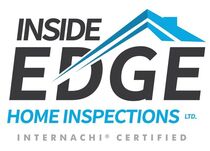

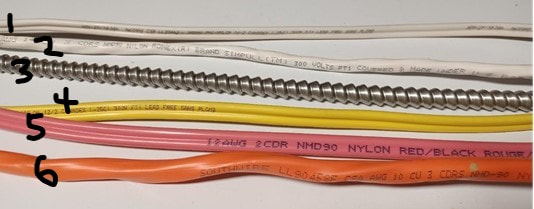
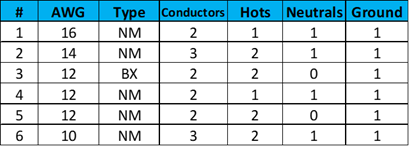
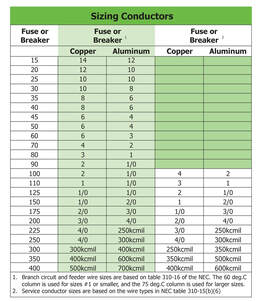
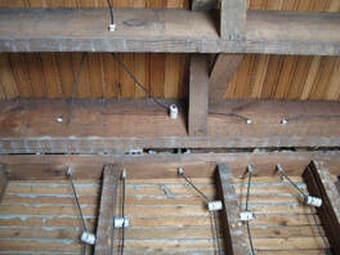
 RSS Feed
RSS Feed

